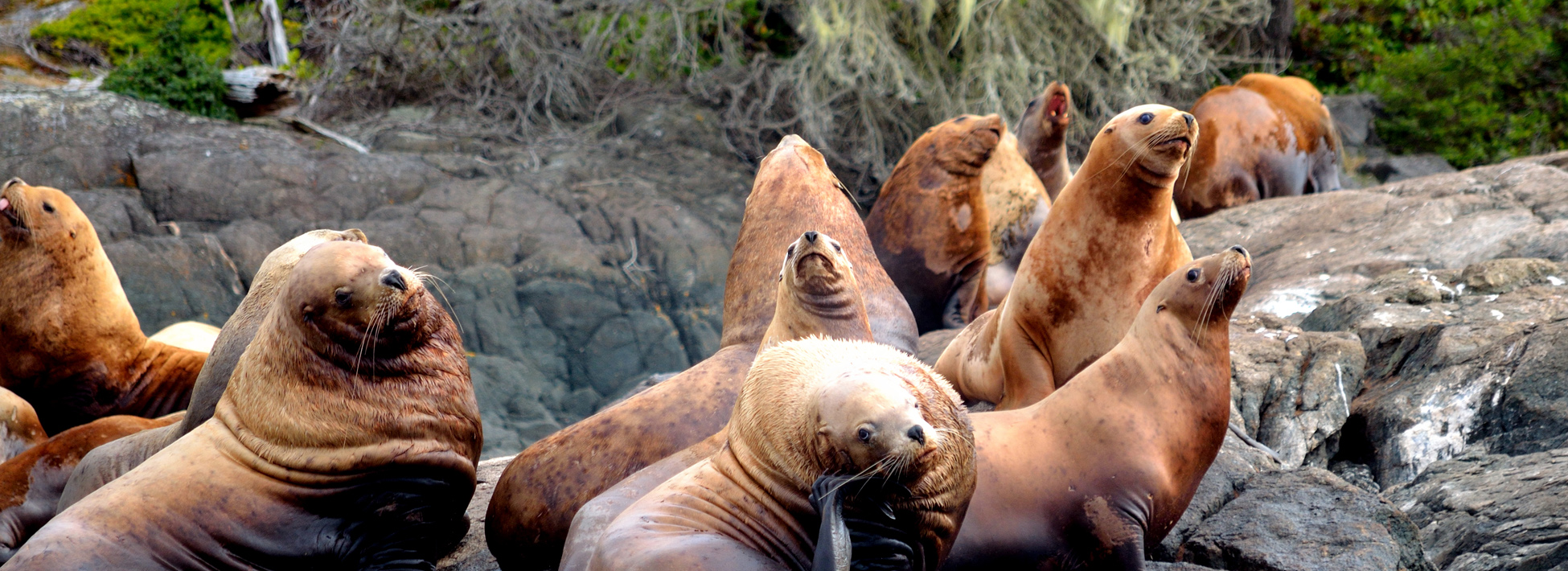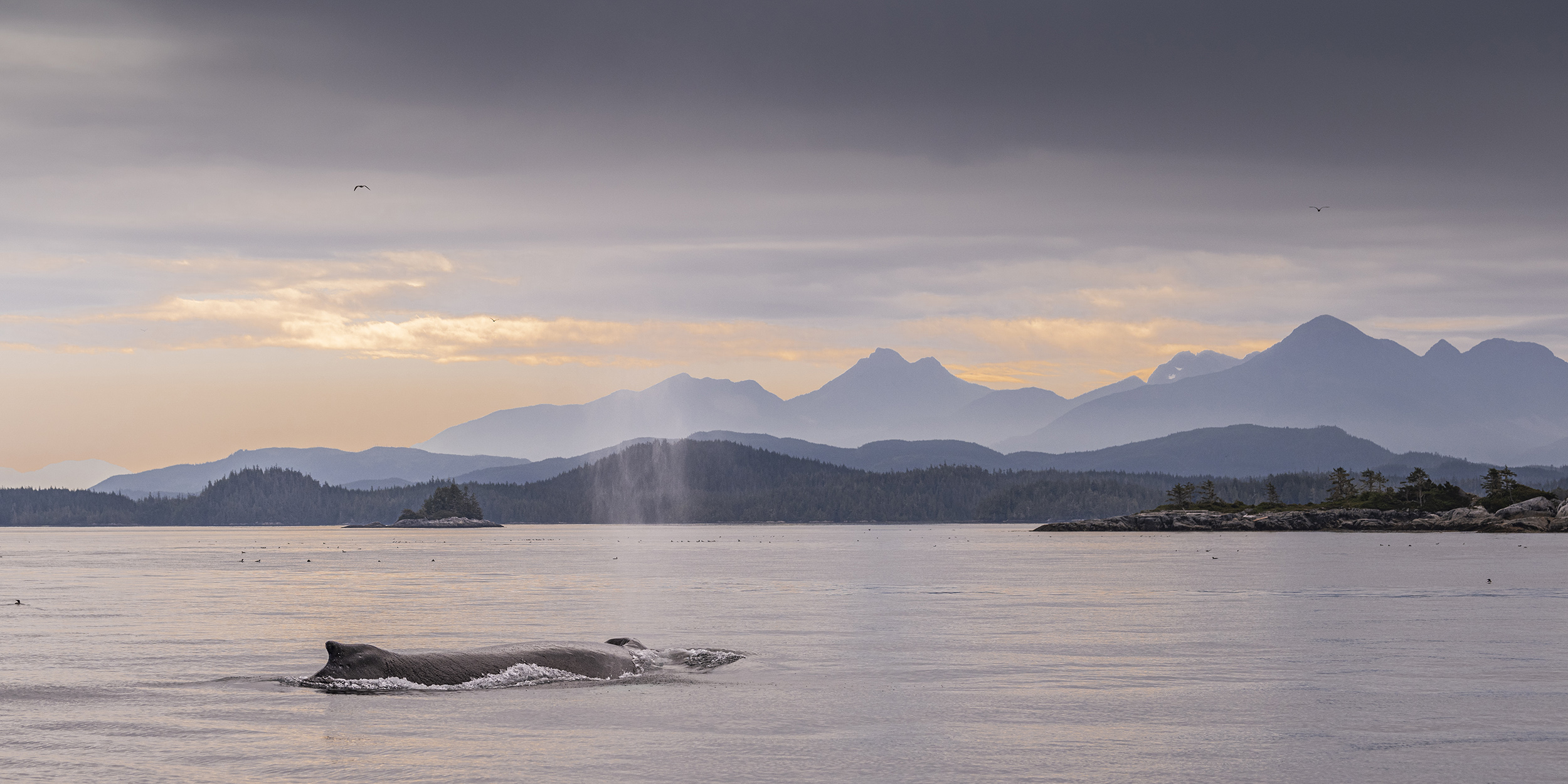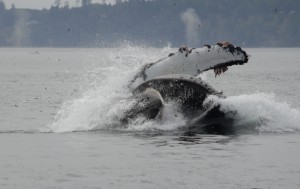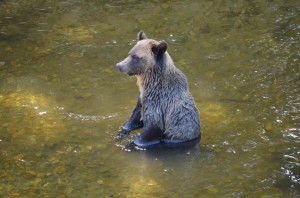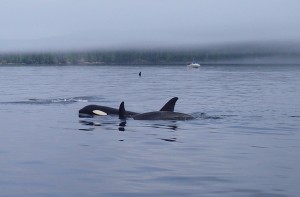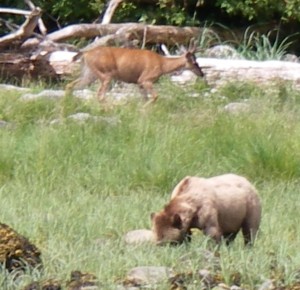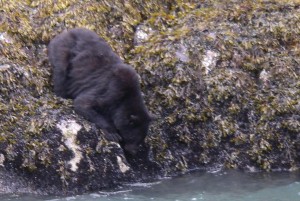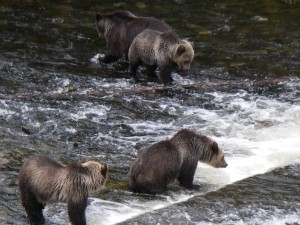
Grizzly bear watchers from the viewing stands on the Glendale River often see a number of bears together in a small area. The abundance of easily caught salmon means that it is not necessary to fight for the best fishing hole. The grizzlies are more tolerant of each other as this photo shows to different mothers with their cubs sharing the same set of rapids. They may keep as eye on each other but rarely are protective of their “spot”.
